
Recruiting is becoming more like marketing. If you want to attract skilled staff, you have to put your best foot forward and illustrate what makes you an employer worth considering.
Of course, you can’t just pump money into marketing and hope for the best.
Instead, you should actively try to make your company an enjoyable and inspiring work environment. This will give you a basis to build your brand on as an employer.
There are many directions you can take with branding. To help you narrow down the selection, we’ve compiled a list of six examples of software companies known for excellent employer branding.
Use them for inspiration, adjust their approach to your needs, and you will become the most desirable employer on the market.
Table of Contents
Google: all about that Noogler hat
Google is the epitome of a people-first company. They demonstrate appreciation for each of their employees, starting with onboarding and continuing throughout all stages of working there.
Google has an acceptance rate of 0.2%. This tells us that the company is quite selective about who they let in.
However, those who do get hired can witness firsthand why Google is often cited as the prime example of a software company with strong employer branding.
When employees join Google, they are first called Nooglers (new + Googler). Each employee receives a swag bag containing the famous Noogler hat.
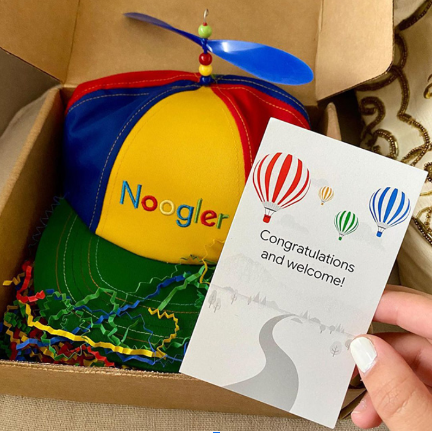
While swag bags are not all that innovative in and of themselves, Google takes them one step further.
The first week at a new job can be stressful. This is why Google emphasizes the quality of being a newcomer, allowing employees to relax, without worrying about the performance just yet.
The Noogler hat is not the pinnacle of caring about employees, though. For Google, diversity is more than a buzzword to include in the job description. The company provides programs to advance equity, and inclusion.
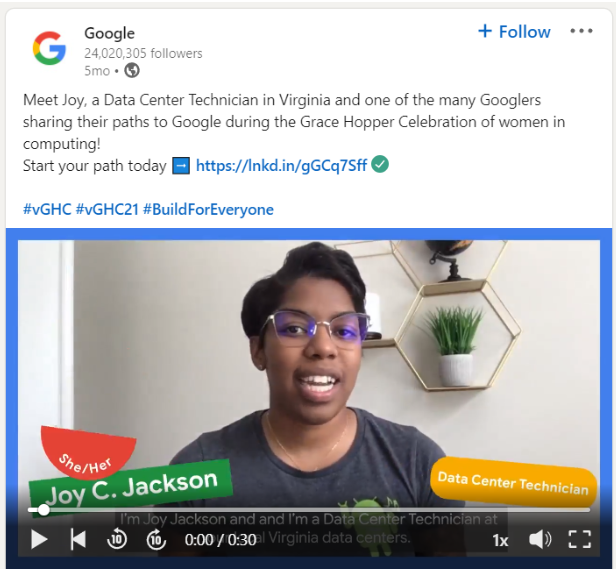
Such an approach shows employees their individuality matters; they’re more than their performance at work. Here’s how Elodie Lhuillier, HR of Google Switzerland, explains that people-first attitude:
“We’re very conscious of how big a role work plays in people’s lives and the importance of meaning within it. We want to be known as a company that genuinely values our people and gives them the freedom to amaze.”
Google even offers programs for employees who leave the company. Xoogler is a community of alumni and current Googlers focused on nurturing entrepreneurship and enabling people to start their own businesses.
All in all, the key to the success of Google’s employer brand is supporting talent from the moment they join the company and even after they leave.

Get unreal data to fix real issues in your app & web.
On-site dry cleaning, massages, pools, and volleyball courts are certainly nice to have.
Still, all these amenities pale in comparison with empowering employees to be their authentic selves both in-office and outside of work, which is an essential element of Google’s employer branding.
Salesforce: a compelling value proposition
If you want to attract top software talent, you have to show them the benefits of working with your company.
In other words, you have to create a compelling employee value proposition (EVP)—an employer branding element Salesforce excels at.
Salesforce, a CRM software solution, was voted the best company to work for in 2018, and they’ve remained near the top since.
The secret to this achievement is to compile methods for improving the employees’ quality of life and then deliver on the promises. If you took a similar approach, you’d be able to decrease employee turnover by almost 70%.
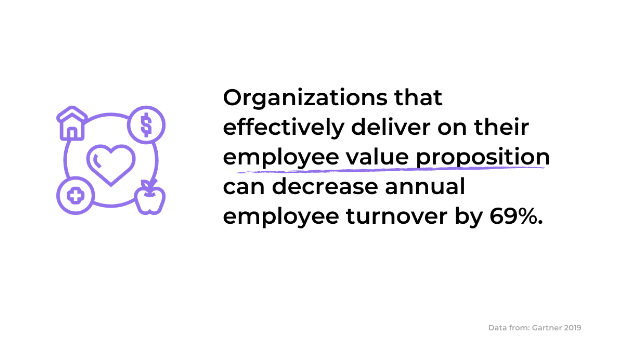
So, let’s take a look at how Salesforce engages their employees with a compelling EVP.
Jennifer Johnson, Head of Global Employer Branding at Salesforce, reports that the company bases EVP and overall work culture on three pillars.
The first one is meaningful, purpose-driven work, where employees truly focus on helping their clients.
The second pillar covers company culture powered by trust, transparency, and innovation.
The final pillar consists of “being fairly recognized and rewarded” for the work done.
Since you can’t only attract talent with abstract values, Salesforce makes sure to demonstrate EVPs through tangible benefits, such as exceptional healthcare, paid time off, and more.
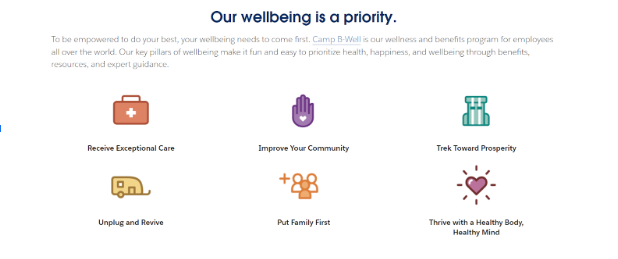
Salesforce also has a unique take on what it means to belong to a community, making it an excellent example of employer branding.
The company is centered around Ohana, a concept from the Hawaiian culture. Ohana, meaning family, represents the idea of community members always being there for each other.
However, Salesforce also considers the literal meaning of Ohana. Their benefits and policies for family care allow employees to enjoy both the career and their families, without having to choose only one.
If the Salesforce EVP sounds like something you’d like for your company, but you don’t have all the necessary means for such promises, remember that you don’t have to go big immediately.
You can start with propositions you can deliver. Once you’ve established your employer branding, you’ll be able to build on that foundation with ease.
Cisco: using the voice of employees
Instead of asking the PR department to represent your brand, you can use the voice of your employees to show what your company stands for, as Cisco does.
This approach is excellent for demonstrating transparency rather than just talking about it.
Cisco, a networking hardware company, is known for being an excellent employer. Glassdoor reviews reveal that a staggering 88% of employees would recommend working there to a friend.

Cisco’s employer branding consists of putting their people first and showcasing the employees and their achievements.
Did you know that 63% of people are able to recall the information from the stories they read, and only 5% remember individual statistics?
Cisco often plays on this piece of data and showcases the career opportunities within the company rather than corporate statistics about employee happiness.
For instance, Madison Embry has worked in Cisco for seven years in ten different roles, each one providing her with more responsibilities, as well as more opportunities.
Cisco has asked Embry to share her story on their blog. The story was shared on the company’s social media for a bigger impact.
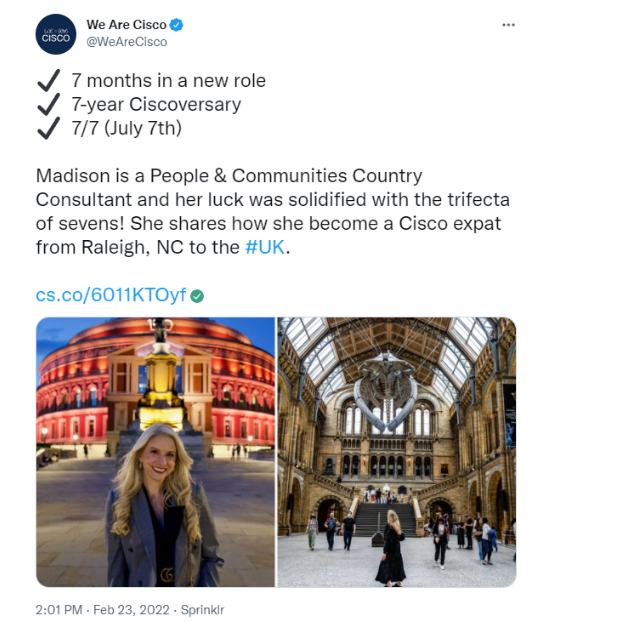
Of course, you can only go so far in attempts to strengthen your employer branding. A stronger indicator of workplace satisfaction is employees sharing about the company on their own.
Many software professionals use LinkedIn to look for jobs in the tech industry. They don’t only explore the company profile; they visit the actual employees’ profiles to look for authentic insights.
However, employees have no reason to talk about mediocre businesses; only excellent ones make it to the homepage.
If you provide your employees with as much support as Cisco does, you’ll also be able to read amazing stories about your company, like this one.
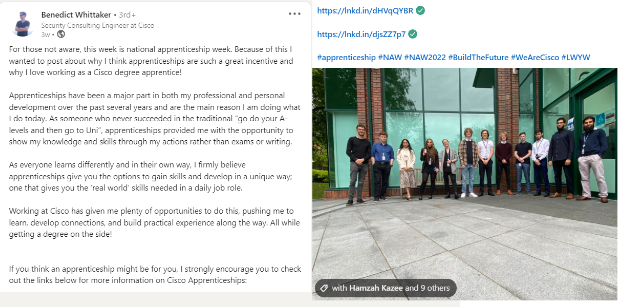
All in all, employees are the most valuable asset of every company. If you’ve put so much effort into recruiting and onboarding the best ones, it makes sense to also do your best to provide excellent work conditions.
Once you have those, you can use your employees’ stories to showcase your employer brand.
GoDaddy: putting diversity first
The story of GoDaddy as an employer wasn’t always all roses. Still, this software company is a great example of how you can overcome your own oversights and make a 180 turn for excellent employer branding.
GoDaddy, an internet domain registrar, had a bad reputation as an employer in the early ‘00s. The biggest issue was their advertising, including commercials demeaning to women.

On top of that, only 14% of their engineering interns and new graduate hires were women in 2014.
Over time, the company realized that they needed more diverse talent to create great products, and started working on changing the company structure. The idea became so important that it later found its way onto the company website.

As of 2021, there are 31% female employees in GoDaddy, and the company is very vocal about the importance of hiring more women in the tech industry.
They sponsor conferences, encourage female students to work in tech, and implement programs to reduce unconscious bias in-house.
Not bad for a company with such questionable history, right?
The company’s Chief People Officer, Auguste Goldman, claims that it is precisely their history that allows GoDaddy to raise awareness of recruiting women in tech.
“Our history allows us to have a stage. We are the ones that maybe you don’t expect, which is allowing us to have a real voice on this. And we take that obligation very seriously.”
GoDaddy has come a long way from bikini marketing, illustrating that companies can progress significantly by listening to feedback from employees and the community.
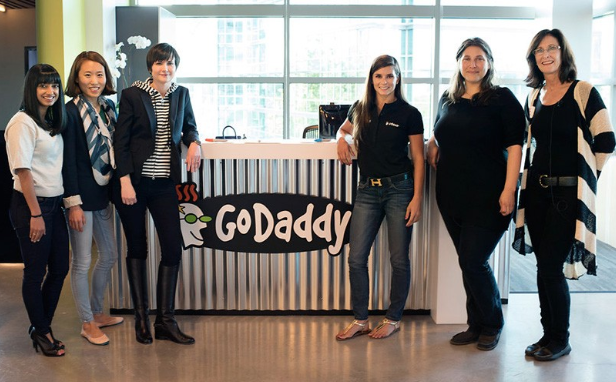
It’s worth noting, though, that GoDaddy didn’t go on an inclusive hiring spree just for the sake of it. They first ensured they had the right culture where employees could feel included and welcome.
So, if you’re considering using your diverse culture as a part of the employer branding at your software company, you could use GoDaddy as a role model.
By creating an inclusive culture and working on hiring and pay transparency, you’ll create an environment where employees can thrive. That way, you’ll build a foundation for successful employer branding.
Netflix: leading the change
If you want to become an employer of choice, you have to not only stay on top of global trends but also anticipate and exceed your employees’ needs. Netflix is an example of a software company that does just that.
In 2020, Hired asked thousands of software developers, product managers, data scientists, and designers to rank the companies they’d like to work with.
Netflix was a clear winner, with a brand positivity index of 86.
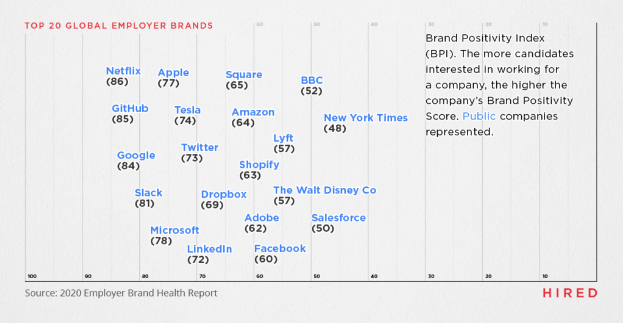
So, what makes Netflix so attractive?
A significant factor that people consider when choosing an employer is company culture. Well, Netflix has a great one and uses it to attract and retain top talent.
Let’s take a look at the story of Ludovic Galibert, a senior software engineer at Netflix.
At his previous company, Galibert had been given 3 weeks off after the birth of his first child.
Unlike many companies with short or nonexistent parental leaves, Netflix provides their employees with 4-8 months of paid leave when their baby is born.
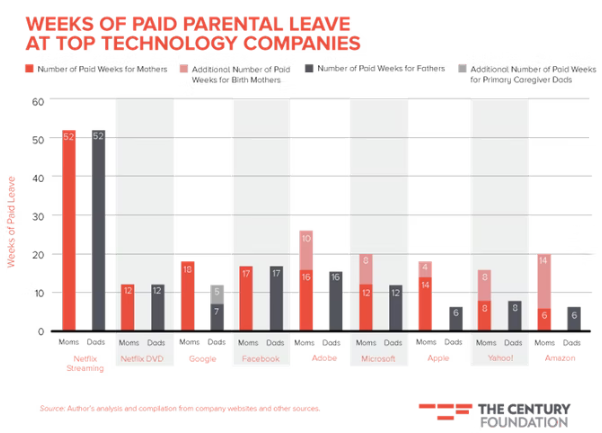
During Galibert’s second parental leave, this time at Netflix, his team went through some organizational changes.
Even though he offered to help with restructuring, he was always told to focus on his family and only come back when he was ready.
“I told everyone to not hesitate to contact me if something came up and they needed my help or input. No one ever sent me emails or Slack messages that could subtly pull me into regular work.”
So, in addition to more time off, he also got the opportunity to completely focus on his family, rather than being distracted by work.
As you can see, Netflix is aware that employees produce excellent results only when their personal needs are met.
Their parental leave policy is just one example of how they go above and beyond to support the employees. There are many other initiatives to take care of every individual in the company.
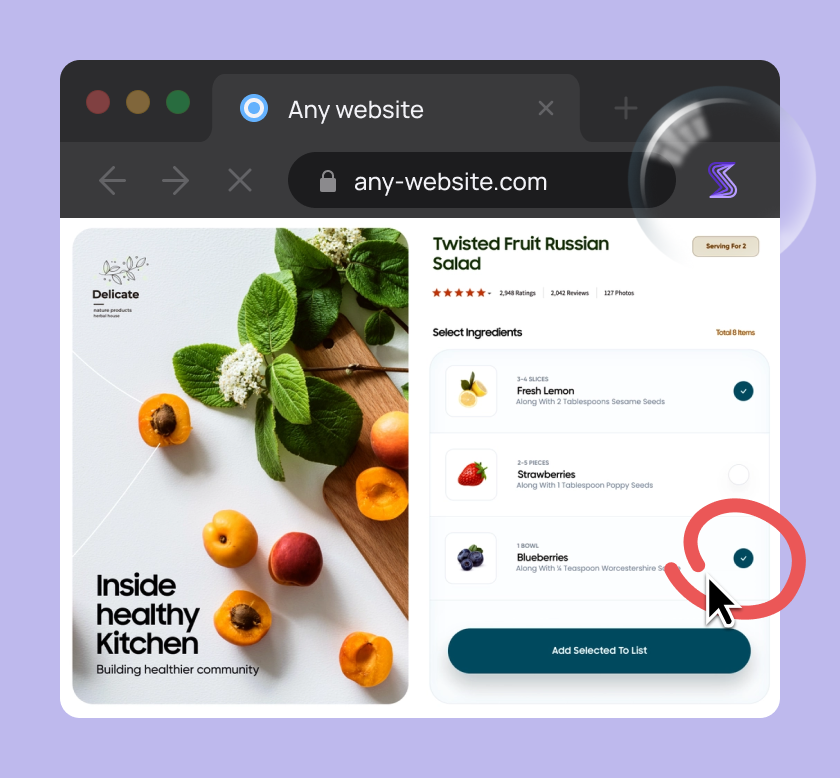
Capture, Annotate & Share in Seconds with our Free Chrome Extension!
To conclude, if you have the means to provide your employees with more benefits, do it. They will appreciate you for going one step further rather than simply sticking to the industry standards.
You may even inspire other companies to up their game, as Netflix did.
Slack: building a community
Slack enables communities across the globe, usually business ones, to communicate effortlessly.
Therefore, it’s no wonder they treat their employees as one big community, so much so that the idea has become a prominent element in their employer branding.
A glance at Comparably’s employer brand data about Slack reveals a rare sight: a 100% rate in employee happiness, meaning that all reviewers are proud to be a part of the company.
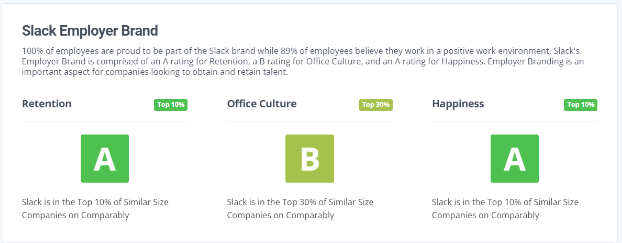
Such rates aren’t surprising if we consider the effort Slack puts into creating a people-first culture.
Stewart Butterfield, the CEO, places a lot of emphasis on building a community of motivated individuals pushing in one direction to achieve great results.
In the early days of Slack, he came up with an original take on company values. Here they are:
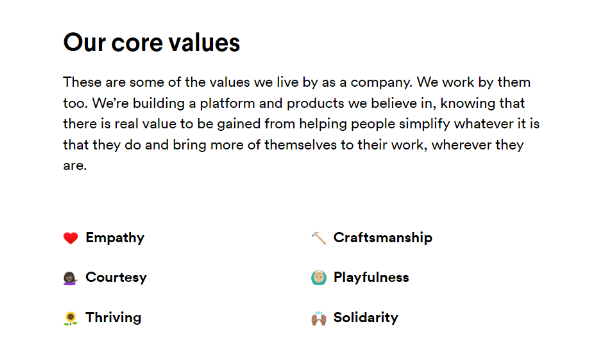
As you can see, there is no mention of making sales, acquiring clients, or being addicted to the hustle.
People working for Slack come first, and it’s the company’s mission to make their lives better. After all, the employees’ happiness reflects on their work, so it’s also in Slack’s best interest to have satisfied workers.
However, the dedication to building a community doesn’t stop with people employed at Slack.
The company also has various programs dedicated to helping Slack users network and find communities, such as forums, workplaces, and chapters.
Slack chapters are local volunteer-led communities where people can share ideas and give back to the community.
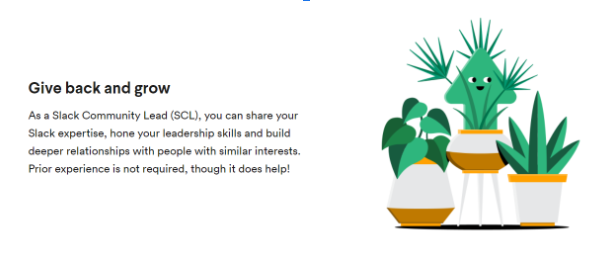
For instance, Alla Pavlova, technical recruiter at Milo, established the chapter in Amsterdam, building a community of more than 100 members.
This allowed her to find new friends and people to collaborate with on projects—the epitome of Slack’s values.
To sum up, Slack is all about communities.
You, too, could emulate the idea by hosting meetups, hackathons, or other events that show you’re big on giving back. That way, you’ll create an employer brand based on altruism and attract talent with similar values.
Conclusion
You don’t have to be a Fortune 500 company to work on your employer branding; companies of all sizes want to attract and retain the best employees.
Still, to attract the best ones, you have to show that you’ll be able to treat them well.
We aren’t only talking about compensation.
You’ll notice that each of our examples of strong employer branding places more emphasis on treating employees as individuals and meeting their professional and even personal needs.
Hopefully, this list has given you some insight into different types of people-first employer branding you can incorporate into your own strategy.





